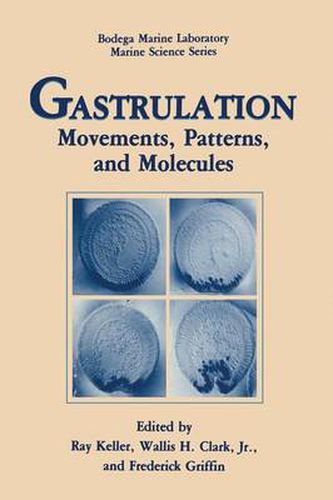Readings Newsletter
Become a Readings Member to make your shopping experience even easier.
Sign in or sign up for free!
You’re not far away from qualifying for FREE standard shipping within Australia
You’ve qualified for FREE standard shipping within Australia
The cart is loading…






This title is printed to order. This book may have been self-published. If so, we cannot guarantee the quality of the content. In the main most books will have gone through the editing process however some may not. We therefore suggest that you be aware of this before ordering this book. If in doubt check either the author or publisher’s details as we are unable to accept any returns unless they are faulty. Please contact us if you have any questions.
Gastrulation is a fundamental process of early embryonic development. It involves virtually every aspect of cell and developmental biology and results in the formation of fundamental structural elements around which a developing animal’s body plan is organized. As such it is not only an important process, but also one that is complicated and not easily dissected into its component parts. To understand the mechanisms of gastrulation one must acknowledge that gastrulation is fundamentally a biomechanical process (that is, a problem of cells generating forces in a three dimensional array, patterned in space and time such that appropriate tissue movements are executed). Three intertwined questions emerge: what cell activities generate forces, how are these cell activities patterned in space and time, and how are the resulting forces harnessed in three dimensional domains? To address these issues it is important to define and characterize regional cell behaviors and to learn how they are patterned in the egg and/ or by subsequent cell and tissue interactions. At the biochemical level, what are the cellular and extracellular molecules that control cell behavior? Finally, how are specific patterns of cellular activity integrated to produce tissue behavior? The task of answering the above questions, an immense task in itself, is compounded by the fact that the morphogenetic movements of gastrulation and their underlying mechanisms vary between different organisms.
$9.00 standard shipping within Australia
FREE standard shipping within Australia for orders over $100.00
Express & International shipping calculated at checkout
This title is printed to order. This book may have been self-published. If so, we cannot guarantee the quality of the content. In the main most books will have gone through the editing process however some may not. We therefore suggest that you be aware of this before ordering this book. If in doubt check either the author or publisher’s details as we are unable to accept any returns unless they are faulty. Please contact us if you have any questions.
Gastrulation is a fundamental process of early embryonic development. It involves virtually every aspect of cell and developmental biology and results in the formation of fundamental structural elements around which a developing animal’s body plan is organized. As such it is not only an important process, but also one that is complicated and not easily dissected into its component parts. To understand the mechanisms of gastrulation one must acknowledge that gastrulation is fundamentally a biomechanical process (that is, a problem of cells generating forces in a three dimensional array, patterned in space and time such that appropriate tissue movements are executed). Three intertwined questions emerge: what cell activities generate forces, how are these cell activities patterned in space and time, and how are the resulting forces harnessed in three dimensional domains? To address these issues it is important to define and characterize regional cell behaviors and to learn how they are patterned in the egg and/ or by subsequent cell and tissue interactions. At the biochemical level, what are the cellular and extracellular molecules that control cell behavior? Finally, how are specific patterns of cellular activity integrated to produce tissue behavior? The task of answering the above questions, an immense task in itself, is compounded by the fact that the morphogenetic movements of gastrulation and their underlying mechanisms vary between different organisms.